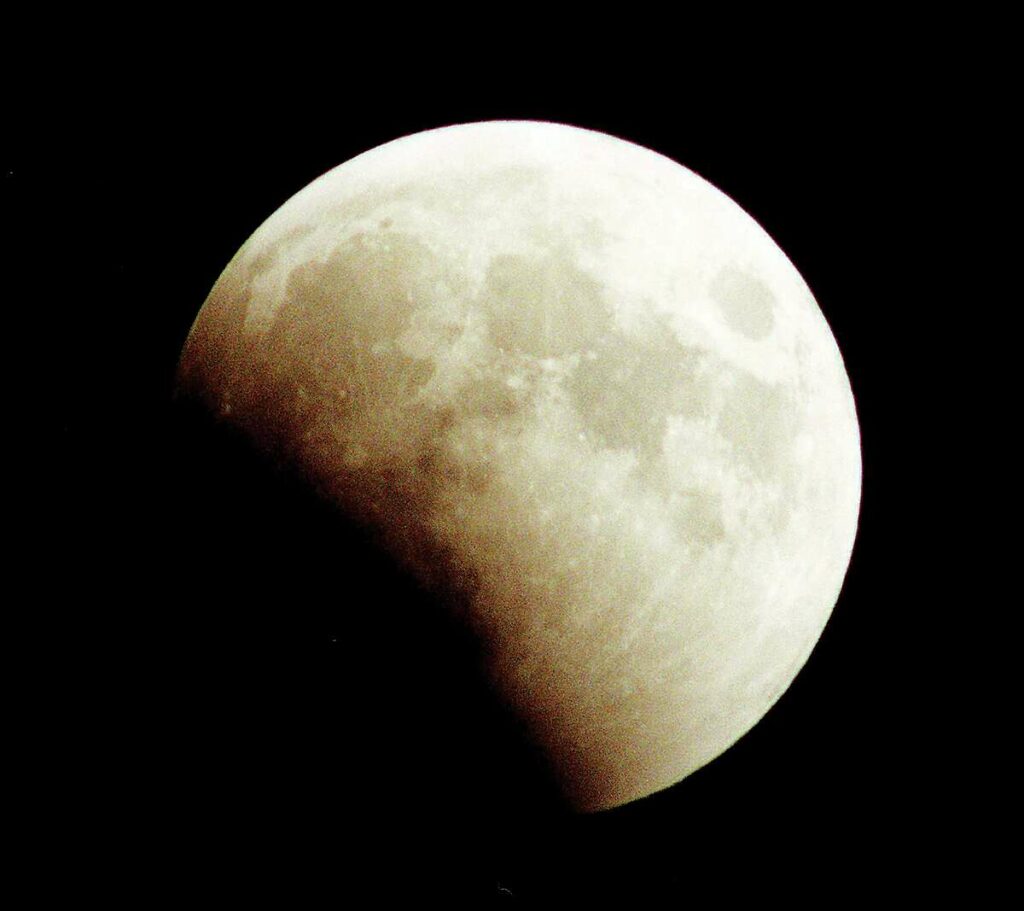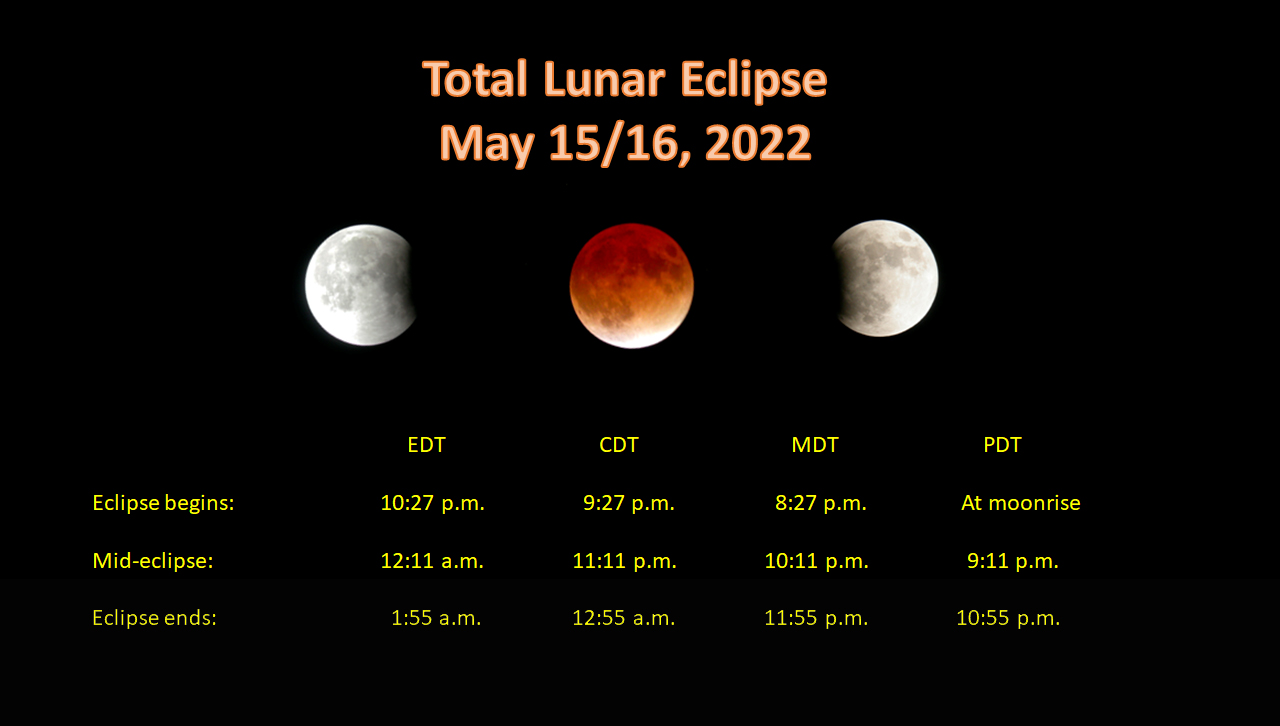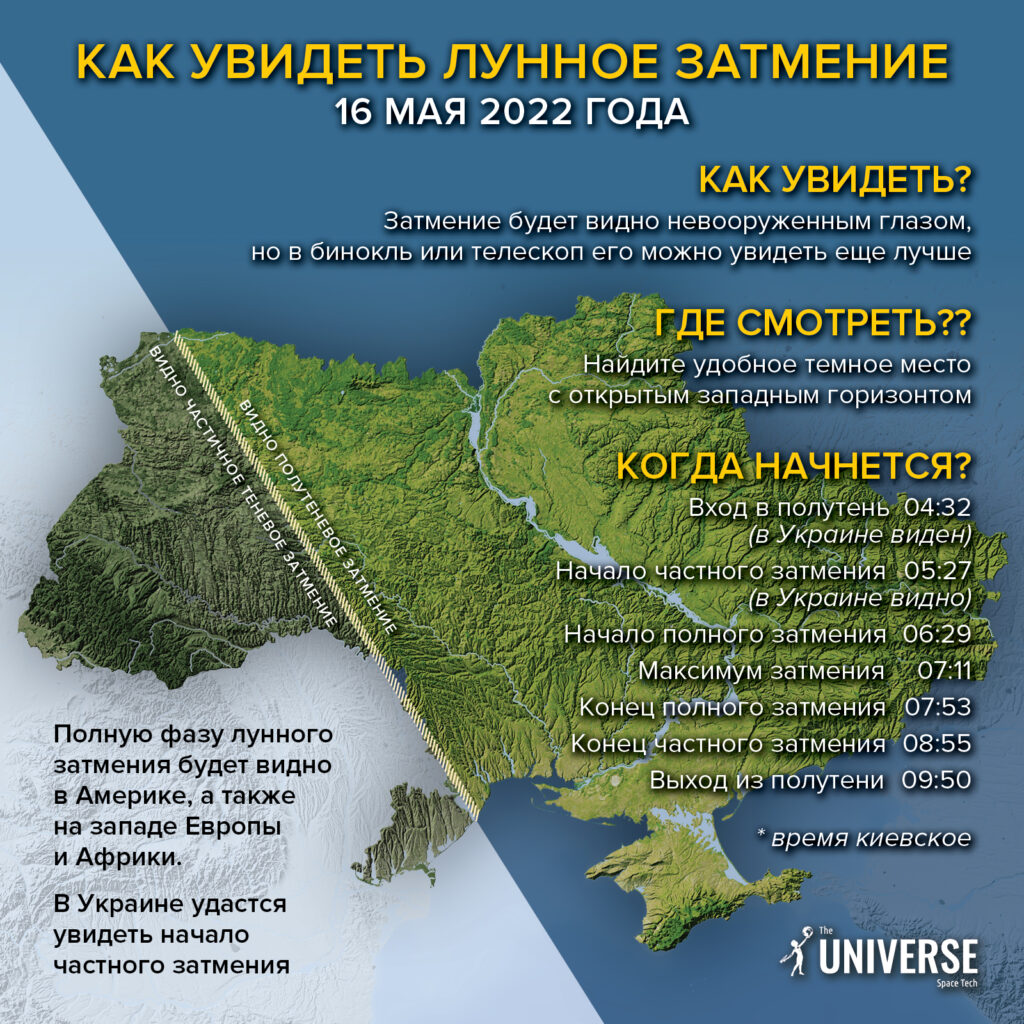On May 16, 2022, the Moon will completely plunge into the shadow of our planet — a total lunar eclipse will occur. Such eclipses do not happen every year, but they are not considered too rare phenomena. From a specific point on the earth’s surface, they are seen much more often than, for example, total or annular solar eclipses — primarily due to the last are observed only in a relatively narrow band, which is crossed out on Earth by the lunar shadow or antithene. Lunar eclipses are visible throughout the hemisphere, for which our natural moon is above the horizon at this time.

What is interesting about the phenomenon that will take place on May 16? Lunar eclipses occur exclusively during the full moon phase, and during the new moon that precedes or comes after them, a solar eclipse necessarily takes place — as a rule, a partial. It was the same now: on April 30 in South America, it was really possible to see the Sun partially covered by the lunar disk. Usually, the interval between the maxima of such “neighboring” eclipses does not exceed 15 days. In this case, it reached 15 days and 7 and a half hours — this is one of the largest indicators in the XXI century.
For us, the most important feature of the current eclipse will be the fact that from the territory of Ukraine — though not from all — its frequent shadow phases will be visible. Before that, we could observe them almost three years ago, in July 2019.

A shadow lunar eclipse is necessarily preceded by a penumbral one, when our natural moon enters an area of space where the Sun looks partially covered by the Earth. It is almost impossible to see such penumbral phases with the naked eye, and only when directly adjacent to the shadow, the part of the lunar disk closest to it looks darker than the opposite one. On May 16, this phase of the eclipse will begin at 4:32 a.m. (here and further all the moments are indicated by Kyiv time). At this moment, the Moon will be in the sky over the whole of Ukraine, but in its eastern part it will soon disappear over the horizon. Simultaneously with its sunset, the Sun will rise over the opposite part of the horizon.
The moon will touch the Earth’s shadow at 5:27 a.m. At this time, it will enter areas located approximately on the Rivne-Odessa line. The further to the southwest, the greater the phase of the eclipse can be seen before our natural moon disappears over the horizon. In the western part of the Transcarpathian region, the lunar disk will have time to sink into the shadow by almost a third before sunset.

In general, the Moon’s entry into the shadow of our planet this time will last one hour and one minute. The beginning of the total “on the horizon” phase in Europe will be visible on the eastern coast of the Adriatic and Ionian Seas, in the central part of Slovenia and Austria, as well as in Germany — on the line that will run from the westernmost point of the Czech Republic to the city of Bremen. Residents of the entire South, Central and eastern North America, as well as scientific expeditions in Antarctica, will be able to see this eclipse completely. Its maximum phase will occur at 7 hours 11 minutes 30 seconds (4:11:30 World time).
The next time you will be able to see the Moon in Ukraine, at least a little immersed in the shadow of the Earth, on the night of October 28-29, 2023. Then there will be a partial lunar eclipse with a maximum phase of only 12%. We will have to wait for a total eclipse until September 7, 2025. Although the nearest similar phenomenon will take place on November 8 of this year, but its shadow phases will be visible only in northern Europe, Asia, Australia, Oceania and the Americas (except for the south and east of South America). During it, the Moon will close the planet Uranus.
Follow us on Twitter to get the most interesting space news in time
https://twitter.com/ust_magazine
